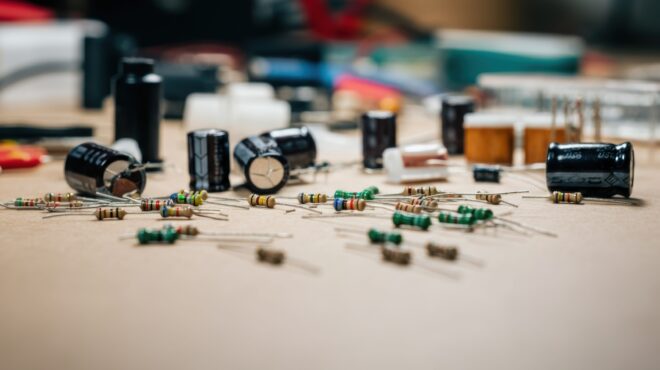
Safety Regulations for Electrical & Electronic quipment
Anyone who manufactures or imports electrical and electronic equipment must be familiar with the current safety regulations. Bürklin has summarized the most important ones below – from the REACH regulation to the RoHS directive to the Tested Safety quality seal.
REACH/RoHS conformity
Manufacturers and importers of electrical and electronic equipment should know what REACH/RoHS compliance is all about. Therefore, the first step is to clarify what the two abbreviations stand for before moving on to the respective description:
- RoHS = “Restriction of the use of certain hazardous substances in electrical and electronic equipment.” Shorter: “Restriction of certain hazardous substances”.
- REACH = “Registration, Evaluation, Authorisation and Restriction of Chemicals.
Proof of conformity is provided by means of chemical analysis or technical documentation.
The REACH Regulation
The REACH system is based on the principle of a self-reliant industry. No data, no market: According to this principle, only registered chemical substances may be put into circulation. Each substance requires its own registration number.
The most important facts about the REACH regulation at a glance
| Official name | Regulation (EC) No. 1907/2006 |
| Entered into force | June 1, 2007 |
| What is behind it? | EU chemicals regulation that simplifies the previous chemicals legislation |
| Who is affected? | Manufacturers and importers who produce more than one ton of a substance annually in the EU or import it into the EU. The substance can also be a component of a mixture or a releasable ingredient of an article. |
The RoHS Directive
The RoHS Directive was introduced to minimize the components in electrical or electronic equipment that are hazardous to health and the environment. It regulates the use and placing on the market of the so-called hazardous substances.
In this context, a whole series of measures must be taken:
- Limit particularly problematic toxic substances to a mass fraction of no more than 0.1 percent. These include lead, mercury, hexavalent chromium, polybrominated biphenyls (PBB) and polybrominated diphenyl ethers (PBDE). The substance cadmium must be limited to a maximum mass fraction of 0.01 percent.
- Replace leaded soldering with unleaded soldering.
- Ban toxic flame retardants in the manufacture of cable insulation.
- Introduce and promote equivalent substitutes where possible.
- Manufacture electrical components that are themselves free of hazardous substances.
As a result, many production processes that were once quite common are no longer permitted.
The most important facts about the RoHS Directive at a glance
| Official name | Directive 2011/65/EU (RoHS 2), formerly 2002/95/EC (RoHS 1) |
| entered into force | January 3, 2013 |
| What is behind it? | EU Directive on the restriction of the use of certain hazardous substances in electrical and electronic equipment. |
| Who is affected by it? | Companies that import or distribute such equipment within the EU are obliged to comply with the regulations. Ultimately, this also has an impact on retail chains and consumers. |
The Tested Safety quality seal
The Tested Safety quality seal, or GS for short, enables consumers to recognize product safety at first glance. The label indicates that the ready-to-use product has been inspected by neutral experts and found to be safe.
The GS mark creates trust by certifying the following requirements of Section 21 of the German Product Safety Act (ProdSG):
- DIN standards
- European standards
- other generally recognized rules of technology

The GS quality seal is so far the only European test mark for product safety that is regulated by law. A declaration by the manufacturer or distributor of compliance with European specifications is the CE mark. Other seals such as ENEC, VDE, ÖVE, TÜV or BG are private marks.
Bürklin Elektronik attaches great importance to offering every customer safe products of the highest quality. The Tested Safety quality seal is therefore part of the standard for product evaluation.


